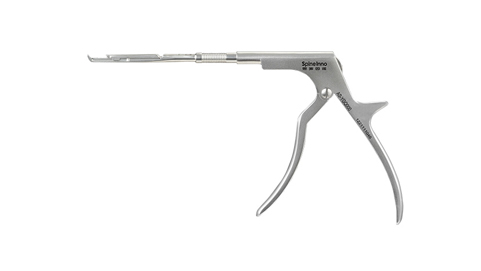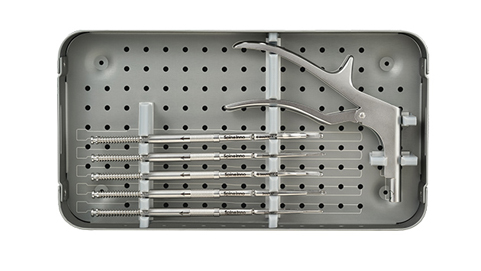Advancing Spinal Surgery with Cutting-Edge Endoscopic Technology
Lingchuang is committed to providing advanced spinal endoscope equipment designed to support the growing demand for minimally invasive spine surgery. Our equipment integrates state-of-the-art technology with precision engineering, enabling surgeons to perform complex spinal procedures with greater accuracy, reduced risk, and faster recovery times.
Whether you're performing Percutaneous Endoscopic Lumbar Discectomy (PELD), Unilateral Biportal Endoscopy (UBE), or other spine-related surgeries, Lingchuang’s spinal endoscopes ensure optimal visualization and control for successful surgical outcomes.
Features of Lingchuang’s Spinal Endoscope Equipment
Lingchuang's spinal endoscope equipment is designed with the specific needs of spine surgeons in mind, offering several key advantages:
High-Definition Visualization: Our endoscopes are equipped with cutting-edge optics that provide crystal-clear, high-definition images. This enables surgeons to see the spinal anatomy in great detail, leading to more accurate diagnoses and treatment.
Minimal Invasiveness: The compact design and advanced technology of our endoscopes allow for smaller incisions, reducing tissue damage and promoting faster recovery.
Ergonomic and Durable: Crafted with ergonomics in mind, our spinal endoscopes are lightweight and easy to maneuver, allowing for extended use without discomfort. Additionally, they are built with high-quality, durable materials to withstand frequent sterilization and intensive use.
Versatile Applications: Lingchuang’s spinal endoscopes are compatible with a range of procedures, including PELD and UBE, making them versatile tools in any spine surgery setting.
Benefits of Spinal Endoscope Equipment in Surgical Practice
The integration of endoscopic technology into spinal surgeries offers numerous benefits for both surgeons and patients:
Enhanced Surgical Precision: Spinal endoscopes provide unparalleled accuracy in visualizing the spine, allowing surgeons to perform highly targeted procedures with minimal disruption to surrounding tissues.
Reduced Recovery Time: Smaller incisions lead to reduced postoperative pain, fewer complications, and quicker recovery, which means patients can return to their daily lives faster.
Improved Patient Safety: The high-definition visualization offered by Lingchuang’s endoscopes enables surgeons to identify and avoid critical structures, reducing the risk of surgical errors and enhancing patient safety.
Lower Risk of Infection: Because of the smaller surgical site and reduced exposure to external elements, endoscopic procedures generally result in a lower risk of infection compared to traditional open surgeries.
Why Choose Lingchuang for Your Spinal Endoscope Equipment?
Lingchuang is a trusted name in spinal endoscope equipment, offering products that meet global standards for quality and performance. Our dedication to innovation ensures that every piece of equipment we manufacture is designed to optimize surgical outcomes and improve the overall experience for both surgeons and patients.
International Certifications: Our equipment is compliant with EU regulations and international safety standards, giving you confidence in the quality and reliability of our products.
Tailored for Advanced Spine Surgery: Our tools are designed specifically for the complex needs of spinal surgery, providing versatility, precision, and durability.
Commitment to Innovation: We continually invest in research and development to ensure our equipment stays at the cutting edge of spinal surgery technology.




